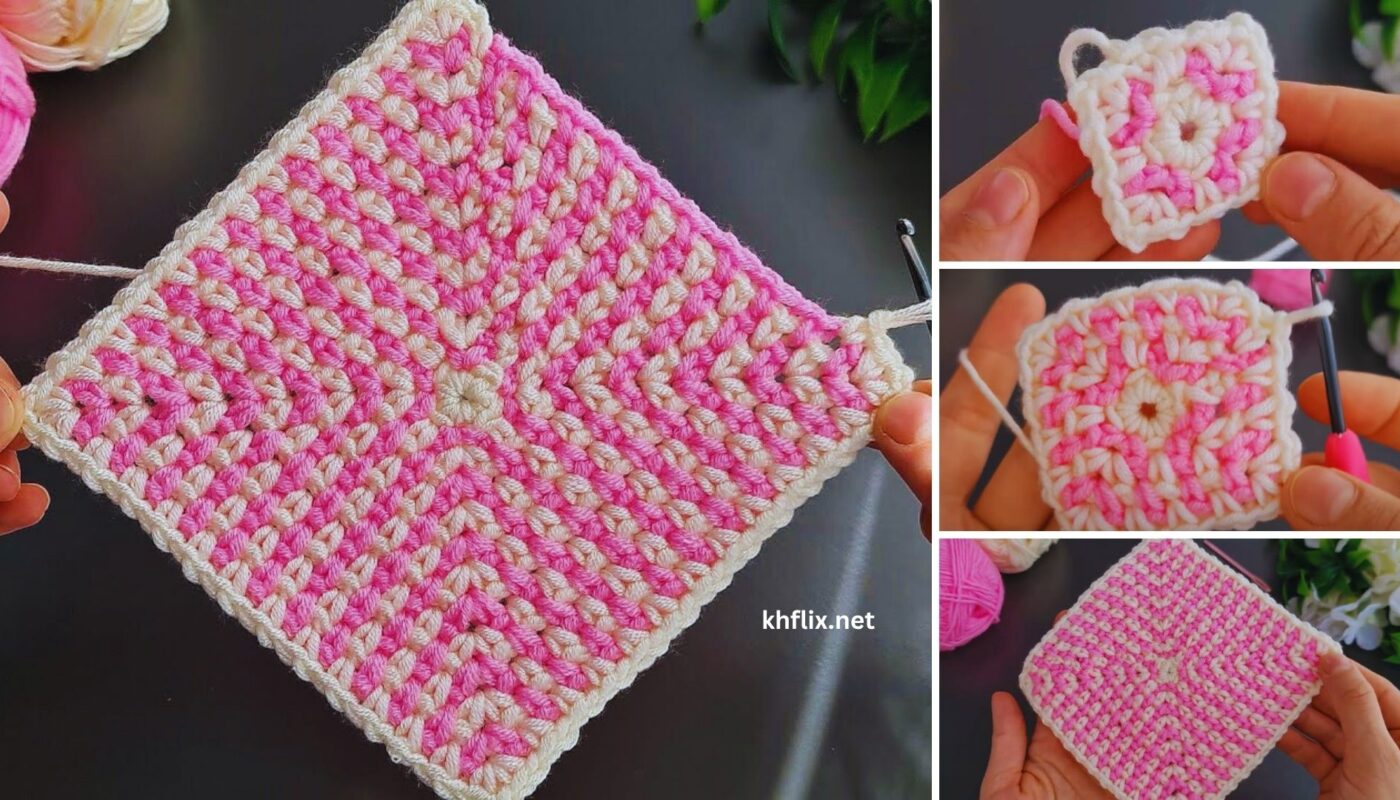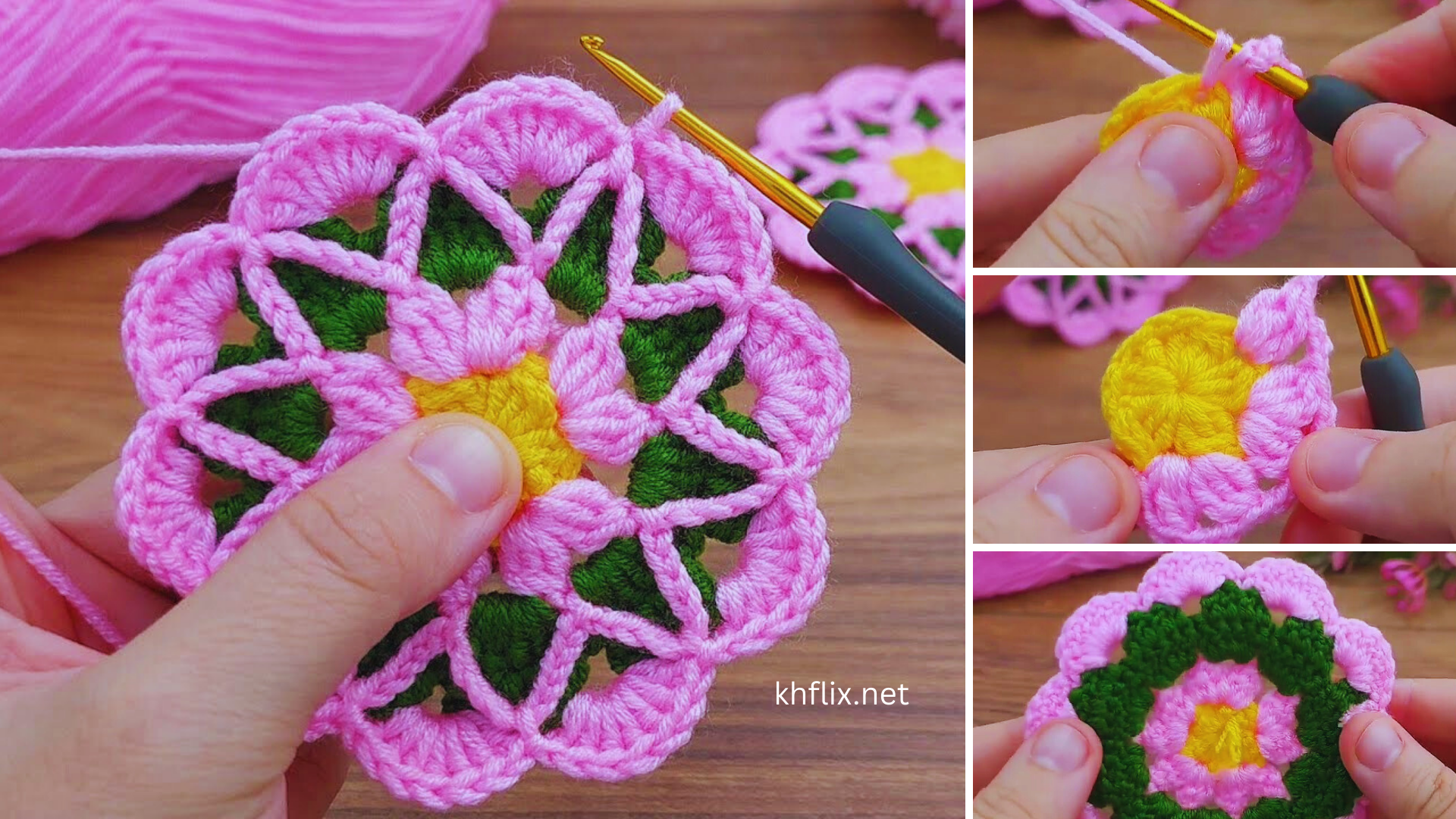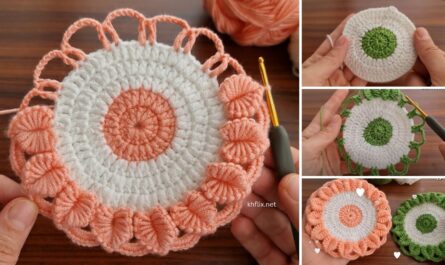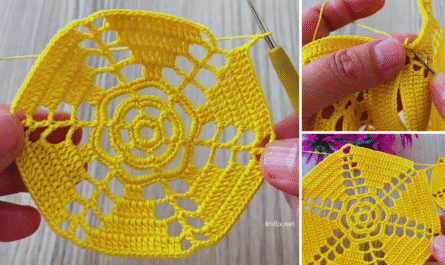A coaster “supla” is a lovely way to add a bit of handmade charm to your table setting. The term “supla” (from Portuguese “sousplat”) typically refers to a placemat, so a “coaster supla” is like a mini placemat for your cup, giving it a more substantial and decorative base than a simple coaster. Let’s create a beautiful crochet coaster supla in a square pattern! This detailed tutorial will guide you through each step, making it accessible for crocheters of various skill levels.

How To Crochet a Coaster Supla Square Pattern
This pattern creates a sturdy, elegant square coaster supla that’s perfect for holding your favorite mug or small decorative items. It’s a great way to practice your basic stitches and achieve a polished, functional piece.
Skill Level: Easy to Intermediate
This pattern is well-suited for those with some basic crochet experience. You’ll need to be comfortable with:
- Chain (ch): The foundation of most crochet projects.
- Slip Stitch (sl st): Used for joining and to move across stitches.
- Single Crochet (sc): A compact, dense stitch.
- Half Double Crochet (hdc): A stitch taller than sc but shorter than dc, offering good density.
- Double Crochet (dc): A taller stitch that works up quickly.
- Working in rows: Crocheting back and forth to build a flat piece.
- Counting stitches and rows: Essential for maintaining the square shape.
- Understanding turning chains: How they count (or don’t count) as stitches.
Finished Coaster Supla Dimensions (Approximate):
Your finished square coaster supla will typically measure around 6-7 inches (15-18 cm) per side. This can vary slightly based on your yarn thickness, hook size, and personal tension.
Materials You’ll Need:
To make your beautiful coaster supla, gather the following:
- Yarn: Approximately 50-70 yards (45-65 meters) of Worsted Weight (Medium #4) Cotton Yarn.
- Why Cotton? Cotton yarn is highly recommended for coasters and suplas because it’s absorbent (great for condensation), durable, and heat-resistant. Acrylic yarn can melt if exposed to very hot temperatures, so cotton is the safer and more practical choice for a hot beverage.
- Color Choices: You can use one solid color for a classic, clean look, or choose two or three complementary colors to create stripes or a subtle border effect.
- Crochet Hook: Size H/5.0mm. This is a common hook size for worsted weight yarn and should give you a good balance of firmness and drape for your supla. If your stitches feel too tight or too loose, adjust your hook size up or down accordingly.
- Yarn Needle (Tapestry Needle): This blunt-tipped needle is essential for seamlessly weaving in all your loose yarn tails at the end, giving your supla a professional and tidy finish.
- Scissors: For cutting your yarn.
Gauge:
For a square coaster supla, achieving the correct gauge is quite important to ensure your piece is square and lies flat.
- In double crochet: Aim for approximately 13 dc and 8 rows = 4 inches (10 cm).
- To check your gauge:
- Chain 15.
- Dc in the 4th chain from your hook, and then dc in each chain across. You should have 13 dc stitches.
- Work 8 rows of dc (ch 3, turn, dc in each st across).
- Measure your swatch. If it’s smaller than 4×4 inches, try a larger hook. If it’s larger, try a smaller hook.

Abbreviations Used in This Pattern:
- ch: chain
- sl st: slip stitch
- sc: single crochet
- hdc: half double crochet
- dc: double crochet
- st(s): stitch(es)
- sp: space
- ch-sp: chain space
- rep: repeat
- FO: fasten off
- (): repeat instructions within parentheses a specified number of times.
- []: indicates the total number of stitches at the end of a specific row.
Let’s Crochet Your Coaster Supla Square Pattern!
This pattern builds the square from a starting chain, working back and forth in rows, and incorporating corners to maintain the shape.
Part 1: Starting the Square Base
For this section, use your chosen main color (e.g., Color A).
- Foundation Chain:Ch 27.
- This chain length will give you approximately 6-7 inches in width. If you desire a larger or smaller supla, adjust this number. For a double crochet base, you’ll generally want to start with a chain that’s a multiple of your stitch pattern plus turning chains. For this pattern, 27 chains will yield 25 usable stitches (after accounting for the turning chain that counts as a stitch).
- Row 1:
- Dc in the 4th chain from your hook. (The skipped 3 chains count as your first dc stitch).
- Dc in each chain across until the end of the row.
- [You should have 25 dc stitches, including the starting ch-3.]
- Ch 3, turn. (This ch-3 counts as the first dc of the next row).
- Row 2:
- Dc in the next stitch (not the one directly below your ch-3, but the next one).
- Dc in each stitch across to the end of the row.
- [You should still have 25 dc stitches.]
- Ch 3, turn.
- Continue Rows:
- Repeat Row 2 until your square base measures approximately 6 inches (15 cm) or matches the width you achieved from your starting chain. For most tensions, this will be around 15-16 rows in total.
- Your last row should end with a dc in the top of the ch-3 from the previous row.
- Do NOT fasten off after the last row if you plan to add a border.
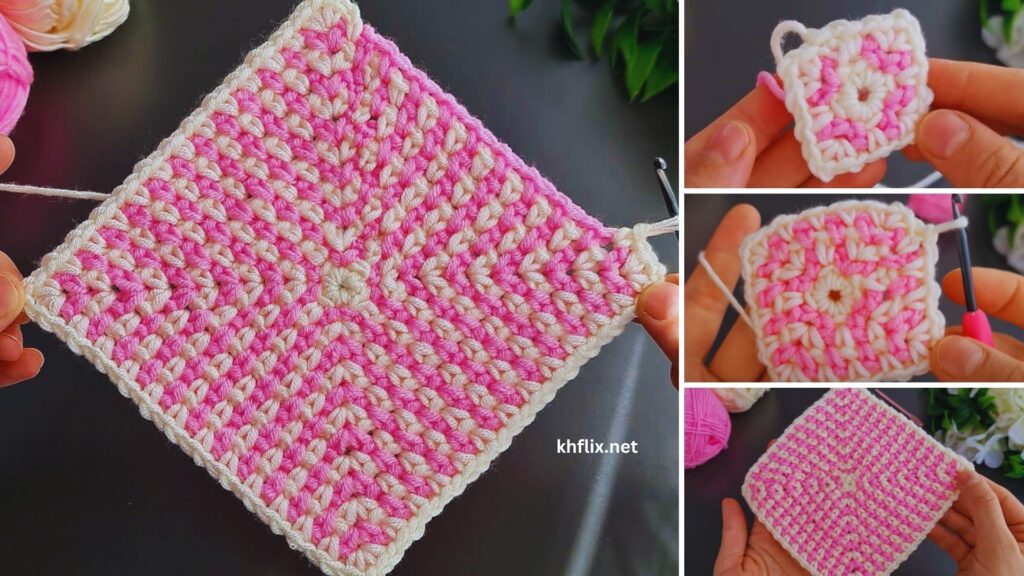
Part 2: Adding a Border (Recommended for a Finished Look)
A border not only gives your coaster supla a neat, professional, and complete look but also helps to square up any slight imperfections in your rows. You can use the same color as your base or introduce a new color for a contrasting edge.
How to Join New Color (if desired for border):
- If you’re changing colors, cut your working yarn, leaving a 4-inch tail.
- Join your new color with a sl st into any corner stitch.
- Border Round 1 (Single Crochet Base):
- With your chosen border color, ch 1 (does NOT count as a stitch).
- Work single crochet (sc) stitches evenly around all four sides of the square. Here’s how to manage the sides and corners:
- Along the top and bottom edges (the starting chain and the last row): Work 1 sc into the top of each dc stitch.
- Along the side edges (the raw edges of your rows): Work approximately 1 sc per dc row. Aim to distribute them evenly. For instance, if you have 15 rows of dc, try to work 15 sc along that side. This will create a smooth edge.
- In each of the four corners: Work 3 sc into the same stitch or corner space. This allows the corner to turn neatly without pulling or puckering.
- When you reach the starting point of this round, sl st into the first sc to join.
- Border Round 2 (Decorative Border – Example with Half Double Crochet):
- Ch 2 (counts as first hdc).
- Work half double crochet (hdc) stitches in each sc around the entire supla.
- In each of the four corners: Work 3 hdc into the middle sc of the 3-sc corner cluster from the previous round. This continues to define your corners.
- Sl st into the top of the beginning ch-2 to join.
- Optional: Add More Border Rounds:
- You can repeat Border Round 2 for a wider border, or experiment with other stitches like double crochet for a different texture. A simple sc edging (ch 1, sc in each st around, 3 sc in corners) for the very last round creates a clean, firm finish.
Part 3: Finishing Your Coaster Supla
- Fasten Off: After completing your final border round (or the last body row if you skipped the border), cut your yarn, leaving a 6-inch tail. Yarn over and pull the tail completely through the loop on your hook to secure the last stitch. Gently tug to tighten.
- Weave in All Ends: This is a critical step for a professional and durable coaster supla.
- Thread each yarn tail onto your yarn needle.
- Carefully weave them through several stitches of the same color on the back side of your supla. Try to go through the middle of the stitches to fully hide the tails. Weave in one direction for a few stitches, then change direction slightly and weave back through a few more stitches (this locks the tail in place and prevents it from unraveling).
- Take your time with this to ensure your supla looks neat, won’t unravel with use or washing, and the tails are completely invisible from the front.
- Optional: Blocking: For a truly professional finish, especially if your supla seems a bit wavy or uneven, consider blocking it.
- Gently wet the supla (you can run it under cool water or spray it).
- Carefully squeeze out any excess water (do NOT wring it aggressively, as this can distort the stitches).
- Lay the supla flat on a clean, dry surface or a foam blocking mat. Gently shape it into a perfect square, making sure the edges are straight and the corners are well-defined.
- Pin it in place if needed using rust-proof pins.
- Allow it to air dry completely. Blocking helps open up your stitches, relaxes the yarn, and ensures your supla lies perfectly flat.
You’ve now created a beautiful and functional crochet coaster supla square pattern! This piece is sure to add a lovely handmade touch to your table settings. Consider making a set in different colors to complement various occasions or seasons. What other crochet projects are you excited to try next?

